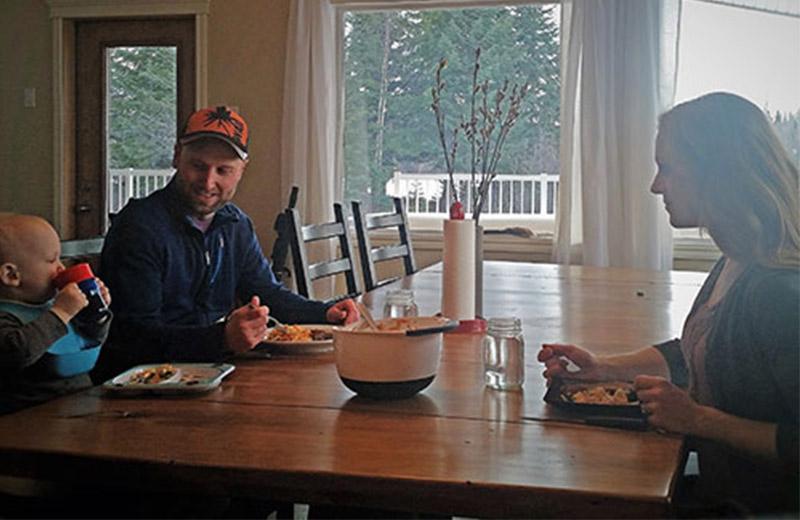When I think back on my childhood, some of my best memories involve food: Big family gatherings for holiday meals, unplanned barbecues in the summertime, baking with my grandmother. They all revolve around enjoying food together as a family. Even when my sister and I were busy with various after-school activities, my parents almost always made sure we sat down and ate together. Now that I have a family of my own, I make a point of having a sit-down dinner most evenings. Is it really worth it to take the time to eat as a family when we could just eat on-the-go? The answer is yes!
What are we missing out on when we don't sit down to eat together?
The way in which families dine together has changed from 20+ years ago. People are often distracted by technology and lead fast-paced, busy lives. But what are we missing out on when we don't sit down to eat together? Research shows that family meals have a big impact on the health and happiness of children. Structured family meals can:
- Serve as an opportunity to "catch up" with one another and exchange stories.
- Engage children in trying a variety of foods in a safe setting where others are enjoying the same foods.
- Teach children to come to the table hungry, and eat with pleasure. They will leave happily satisfied and energized to do other things.
Family meals don't have to be elaborate
They can be as short or as long as your schedule allows. Even sitting down to enjoy a snack together is beneficial. Some meals might be missing a family member or two for whatever reason - and that's okay. The key is to have everyone as often as your family can manage. To get started, try these tips:
- Set a realistic goal. If you aren't already having family meals, try for 2 or 3 meals a week and build from there.
- Pick a time to eat that works for most family members, or alternate times so everyone has a chance to participate.
- Communicate to all family members about the time and place. This avoids the "I didn't know" excuse.
- Set aside all distractions. Come to the table gadget-free, ready to eat and connect with one another.
- Keep the mood positive. Don't pressure children to eat; provide a variety of food and allow them to choose whether and how much to eat.
Remember: It's not always about what you eat, but that you are taking the time to eat together. Start making plans for your next family meal today!














Comments